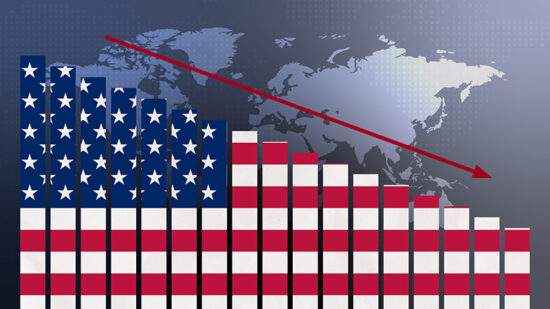After decades of double-digit GDP growth rates, China’s economy is at a watershed. The old growth drivers of manufacturing and investment are losing effectiveness, forcing the government to bolster services and consumption as new growth engines while it grapples with ballooning levels of debt.
However, in contrast to the most bearish forecasts, we do not believe China is at risk of an imminent large-scale financial crisis. China has one of the biggest current account surpluses of any country on an absolute basis and is the world’s biggest holder of foreign exchange reserves – roughly $3.5trn (£2.4trn, €3.2trn) at the end of September. This provides the country with ample resources to support its financial system.
As long as China’s government can finance its banking system by maintaining some control over the capital account, using liquidity from the surplus, and has central bank reserves at its disposal, we believe it can avoid a crisis by kicking the can down the road – just as the European Central Bank did at the height of the euro sovereign debt crisis.
Unlike US bank regulators, which allowed Lehman Brothers to fail, policymakers in China are opposed to letting financial firms go under, as doing so would be too destabilising. Similarly, cleaning up the NPLs in China’s banks could produce negative GDP growth – an unattractive option for Chinese policymakers.
A long and slow grind ahead
Maintaining the status quo will allow China to forestall a Lehman-type crisis and avoid a painful deleveraging process. However, this is not a cost-free strategy in the long run. Misallocated capital, overcapacity in certain industries, and investment in projects with diminishing returns will continue to weigh on China’s economy, resulting in GDP growth slowly grinding lower over time.
China continues to reform its economy, and the changes in some areas are encouraging. However, reforming the SOEs that make up a large part of China’s economy is a long and complex undertaking that faces stiff resistance from competing interests. Whether or not these reforms will be successful is still uncertain.
Given China’s ability to service its debt, unwillingness to let financial firms go under, and emphasis on stability, we believe China could be in for a ‘lost decade’ of below-potential growth, much like what Japan endured after its property market bubble burst in 1991.
Opportunities in innovation
Despite China’s slowing economy, we are finding pockets of opportunity in businesses taking share in their respective markets. Technology companies, particularly some Internet names, and select consumer and services companies are still growing. Most of our research centres on private sector companies, where people are proving more adept at responding to the new environment.
In the consumer area, we are focusing on the innovative businesses introducing new and different products, as Chinese consumers become more sophisticated in their preferences. In the services area, we think healthcare and logistics are promising areas. The opportunity set in services is currently small, but has a lot of room for growth.
We try to seek out businesses adjusting to lower, even negative, top-line growth. Many companies realise the strong demand and cheap money of recent years is gone for good and have restructured businesses to adapt to a tougher operating environment.
Longer term, we think China’s A share market will open up many opportunities. Right now, the A share market comprises over 2,000 Chinese companies only accessible to overseas investors through limited quota systems. China’s government is slowly opening up the A share market, which will be fertile ground for stock selection in the coming years.
Currently, China accounts for just 2.7% of the MSCI All Country World Index. However, after the eventual inclusion of the A share market, the country’s allocation could more than double to 5.9%. Given China’s relatively low exposure in global equity indices, we believe demand for Chinese stocks will inevitably rise as MSCI increases the country’s weighting over time.








